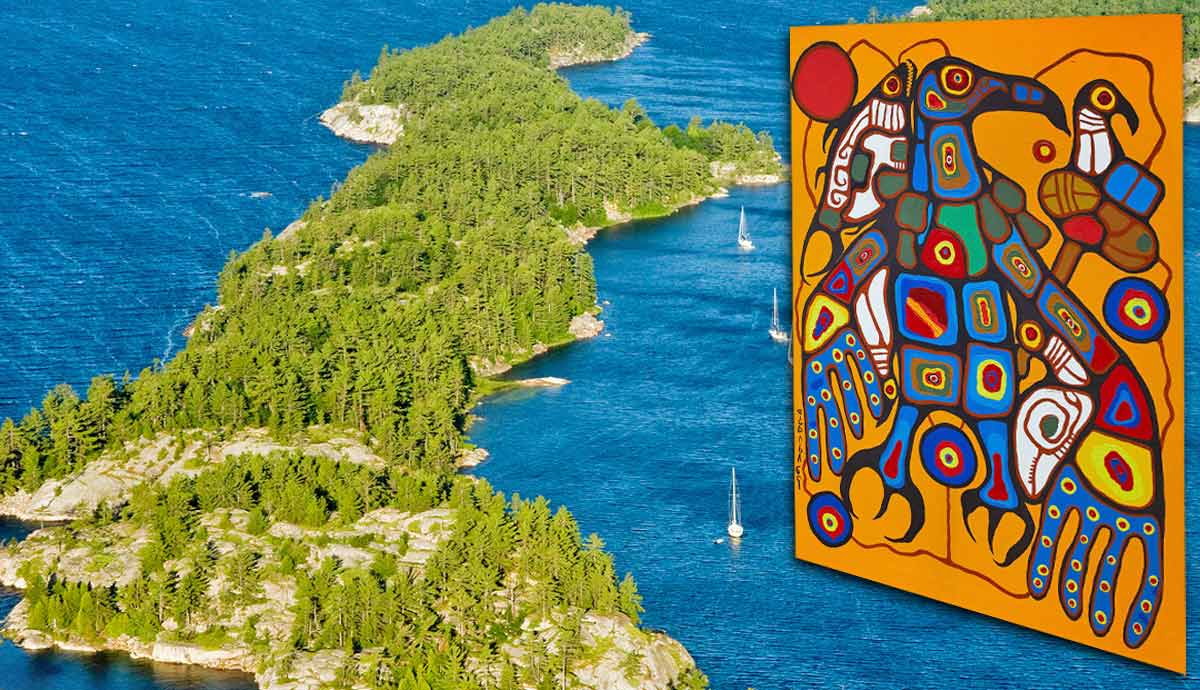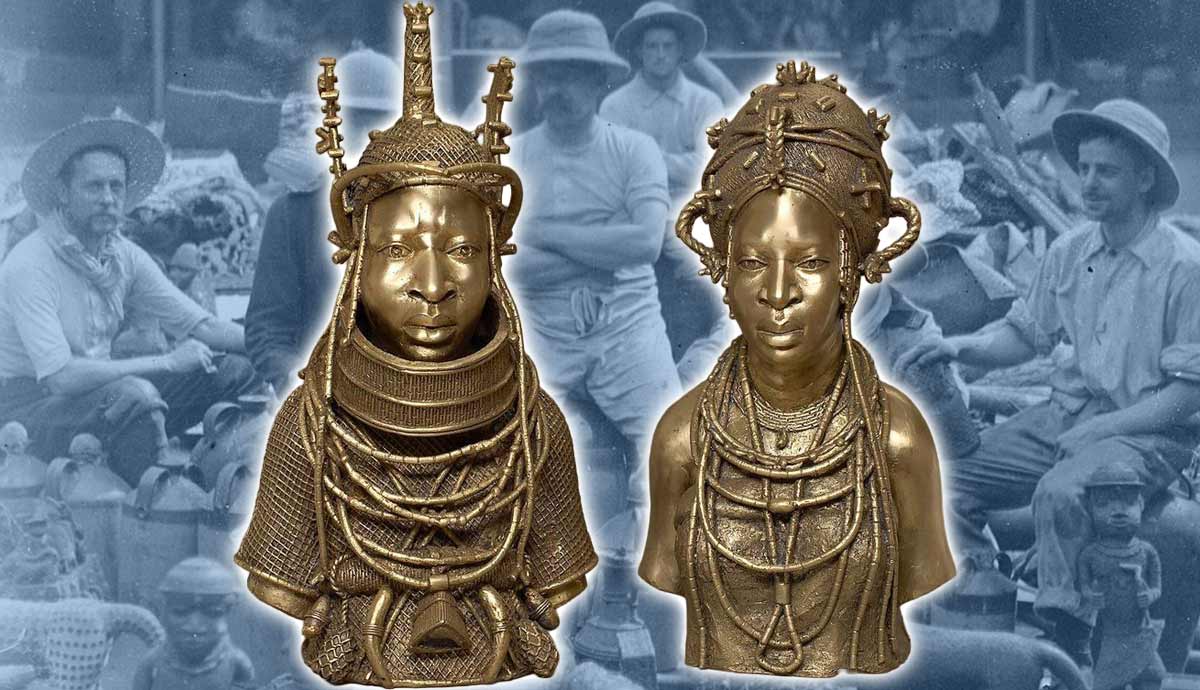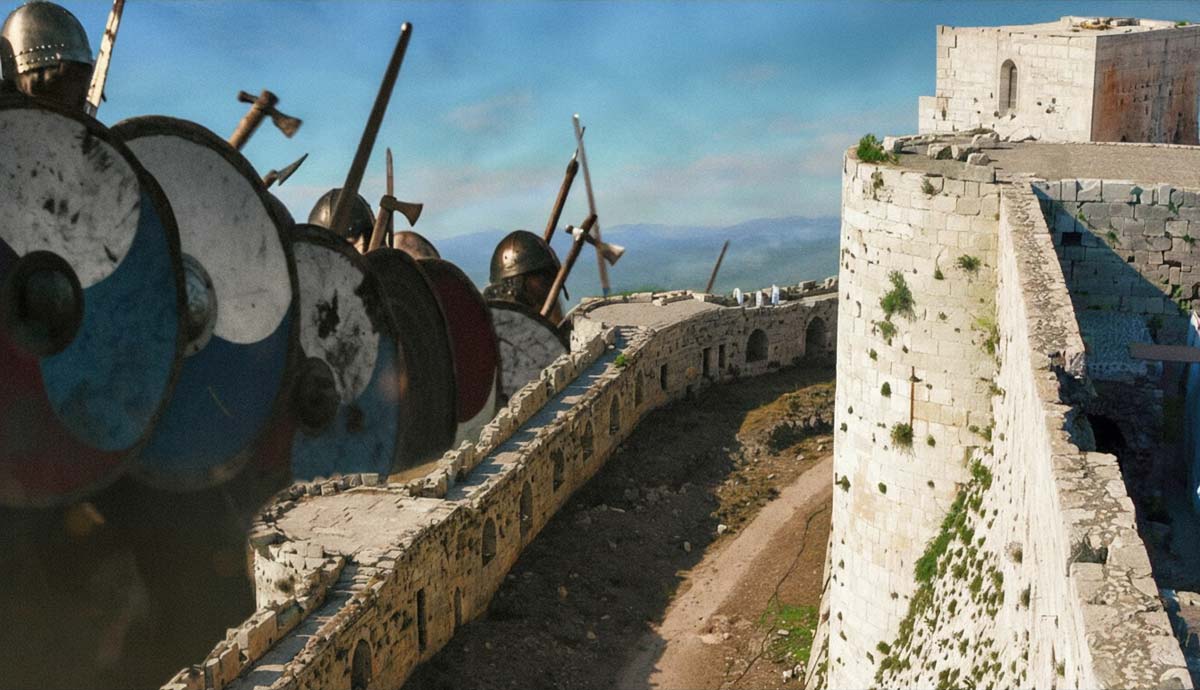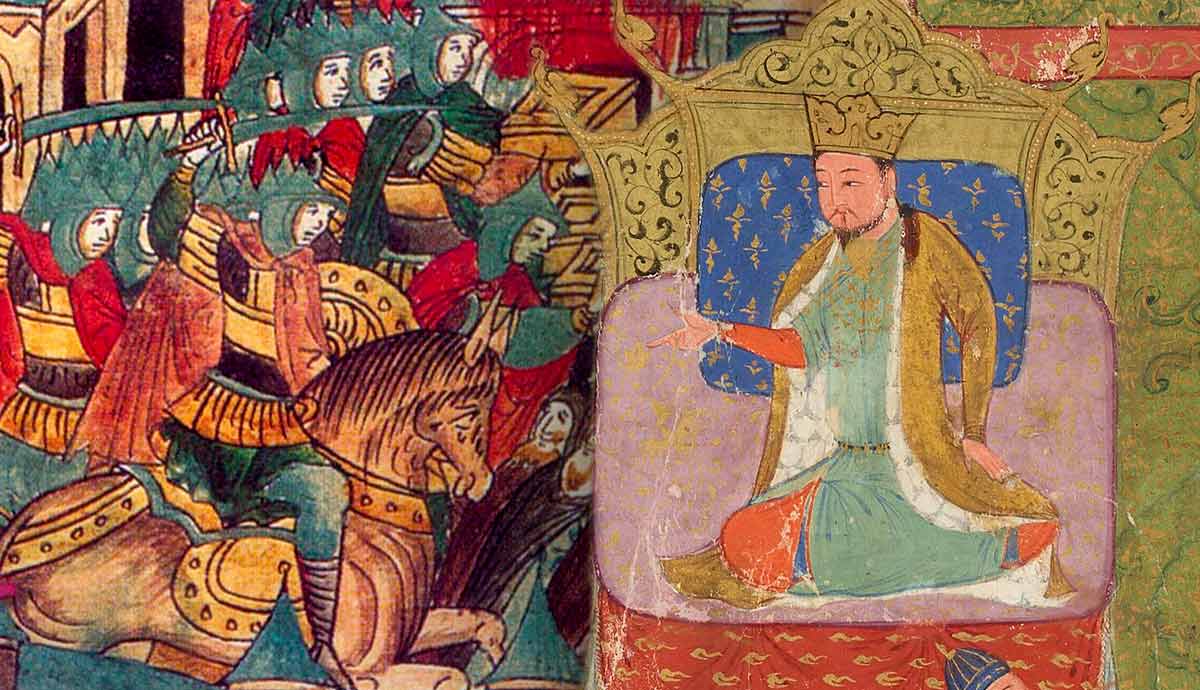
The Canadian Eastern Woodlands (or Northeast) is one of the six cultural regions that make up Canada as we know it today. Altogether, it stretches from the Maritime provinces in the east, to the south of the St. Lawrence, and to the west of the Great Lakes in the west. Part of its southern border coincides with Canada’s international border with the United States. The history of the First Nations peoples who have inhabited this vast region since time immemorial is one of encounters, wars, displacement, and great art. Today, writers, painters, and activists such as Leanne Betasamosake Simpson (Michi Saagiig Nishnaabeg), Basil Johnston (Ojibwa), Tomson Highway (Cree), Norval Morrisseau (Bingwi Neyaashi Anishinaabe), Daphne Odjig (Odawa-Potawatomi), and Kateri Akiwenzie-Damm (Chippewa-Nawash) are making the culture of their ancestors known to the world.
When Did the First People Arrive in the Eastern Woodlands?

The Canadian Eastern Woodlands is characterized by deciduous forests and shaped by the Great Lakes, and the St. Lawrence River that connects the Lakes to the North Atlantic Ocean. The first Palaeoindians arrived in this area after the end of the last Ice Age, about 11,000 years ago. Most of what we know about their culture comes from the burial sites discovered in the first areas occupied by these early hunters, namely southern Ontario and the St. Lawrence Valley. The objects found in these graves, abundant and rich, tell us that toward the end of the so-called Laurentian period, from about 7,000 to 3,000 years ago, Iroquoian culture underwent a period of relative wealth.

The Early Ceramic Period dates from about 3,000 to 1,100 years ago. As the name suggests, these years were marked by the advent of pottery. In the burials that archaeologists found throughout southern Quebec and Ontario, north of Toronto, bodies were surrounded by (broken) ceramic vessels, some of which were decorated with added collars. Other large mounds were rich in copper, silver, and shells. Archaeologists also found evidence of burned, cut, and charred human bones in burials and ossuaries.
What do these findings tell us about the cultures of this period? Firstly, it suggests that these people were actively trading with those from regions as far south as the Gulf of Mexico, especially toward the end of the Early Ceramic Period. Secondly, the findings tell us that about 1,500 years ago, they started to cultivate maize and corn, as well as squash and beans. This resulted in an impressive population explosion. Thirdly, that warfare, along with the practice of taking prisoners, was relatively common and that it had intensified shortly before the coming of the Europeans.

In the central Algonquian area, the Early Ceramic culture is called the Laurel culture, and dates from 2,200 to 1,000 years ago. In the Iroquoian-speaking areas, the Late Ceramic Period began around 1,100 years ago and its end coincided with the arrival of Europeans and colonialism. At this point in time, people tended to lead predominantly sedentary lives, farming, hunting, gathering plant foods, and fishing. Their villages, consisting of bark-covered longhouses, were typically surrounded by rows of palisades for defense (sometimes as many as four rows, as is the case at the Draper Site, an ancestral Huron village northeast of Toronto).
Iroquois or Iroquoians?

The term Iroquoian refers to one of two unrelated language families spoken by Indigenous peoples in the Eastern Woodlands (the other one is Algonquian). These two large families encompass various First Nations whose ancestral lands are all in the Eastern Woodlands. The Iroquoian-speaking peoples include the St. Lawrence Iroquoians, the Petun, the Neutral, the Wenro, the Wendat, the Erie, and finally the Haudenosaunee.
The term Iroquois, on the other hand, designates the group of five Indigenous nations that united into a single, political, and military alliance, the League of the Iroquois around 1525, shortly before European contact. They were the Seneca, Cayuga, Onondaga, Oneida, and Mohawk, and they referred to themselves as the Haudenosaunee, meaning “People of the Longhouse,” or “People who are building the Longhouse.” The name Iroquois has been used to describe the Haudenosaunee for decades, but it remains a term laden with colonial implications.

The confederacy also welcomed in another group, the Tuscarora, who had fled north after being driven from their ancestral lands in North Carolina and who were defeated during the so-called Tuscarora Wars of 1711-1713. Consequently the confederacy took the name of the League of Six Nations.
Through their confederacy, the Haudenosaunee wanted to promote peace among their people. Their (oral) constitution is called the Great Law of Peace (Kaianere’ko:wa) and provided Iroquois with all they needed on a political, social, and cultural level. The League was governed by a Grand Council of fifty sachems (chiefs), all united under the symbol of the white pine: it was under a large white pine, in fact, that the leaders of the five nations buried their weapons. After the involvement of the Iroquoians in the fur trade, the wampum became the symbol of the League, and the Onondaga became known as the league’s “wampum keepers.”

In fact, each nation had a specific role: that of the Onondaga, for instance, was to call and host meetings. Groups remained, however, largely independent. In 1777, during the American Revolutionary War, for instance, the Oneida sided with the Americans, while the Seneca, Onondaga, and Cayuga supported the British cause.
The Haudenosaunee took an active part in all the major wars that took place on North American soil after the arrival of the Europeans, from the Beaver Wars (also known as the Iroquois Wars), which lasted nearly a century, from 1609 to the early 18th century, to the American Revolutionary War, and the War of 1812.
Each of these conflicts caused upheaval among the Iroquoians. After the American Revolutionary War, for instance, the Oneida lost their lands and were forced to move to present-day Wisconsin. Similarly, several Algonquians from the American northeast moved into southern Ontario. Their descendants now live in Canada along western Lake Huron.
The Vanished Hochelaga Village

One of the most important and mysterious Iroquoian-speaking groups was the so-called St. Lawrence Iroquoians. Their ancestral lands stretched from present-day Montreal to Quebec City, along the banks of the St. Lawrence River. Most of what we know about pre-contact St. Lawrence Iroquoians (the term itself betrays our colonial approach to these cultures) comes from the writings of French explorer Jacques Cartier (1491-1557), who first traversed, described, and mapped this area in 1534, and later from Samuel de Champlain (1567-1635), who was there in 1603.
In less than a century, the lives of the St. Lawrence Iroquoians had changed dramatically. The discovery of ceramics typical of the St. Lawrence Iroquoians (such as those found in modern Montreal) in some Huron villages has led archaeologists and historians to believe that St. Lawrence Iroquoians ceased to exist as a distinct group following warfare with the Huron.

Epidemic diseases brought by the Europeans, starting with Cartier in 1534, had surely done the rest. Today, the name of Montreal’s Hochelaga-Maisonneuve neighborhood reminds us of the traditional owners of the land on which the city was founded and built, in 1642.
In his detailed account of the Gulf of Saint Lawrence, Jacques Cartier relates stories of the Hochelaga village, which he and his men visited at the beginning of October 1535 and which is remembered today by a plaque near McGill University. Circular in shape and surrounded by corn fields and a triple row of 15-meter-high palisades (50 feet), like most Iroquoian villages, it consisted of about 50 wooden houses. Not even a century later, when Champlain visited the area, the village had been abandoned.
More Than Just the Haudenosaunee: The Wendat-Huron & Tionontati-Petun

Samuel De Champlain also left us a detailed account of two other Iroquoian groups, the Tionontati (or Petun, as the French called them because of the tobacco they grew), who occupied the areas south and southwest of Georgian Bay, and the Wendat (or Huron), whose ancestral lands stretched from Georgian bay to Lake Ontario. As is often the case, these groups called themselves by names that linked their culture and identity to their ancestral lands: Wendat means “islanders” or “peninsula dwellers,” while Tionontati translates as “people of the hills.”
The Wendat-Huron and Tionontati-Petun longhouse villages were connected by trails, fortified by bark-covered palisades, and surrounded by corn fields. Along with squash, pumpkins, and beans, corn was the staple of their diet. Fishing was much more important than hunting: deer and beaver were killed mostly for their pelts, which were then made into clothing.

The Tionontati-Petun people often tattooed squirrels, lizards, and snakes on their bodies. It seems that both groups often ate dogs and raised bear cubs to eat later. Thanks to Jesuit Relations, which chronicles the missionary zeal that drew Jesuits to work with the Huron from 1634 to 1650, we know that the Tionontati-Petun were divided into two Nations, the “Nation of the Deer” and the “Nation of the Wolves.” The Wendat-Huron confederacy was even larger and comprised four groups, the “Deer Nation,” “Bear Nation,” “Rock Nation,” “Cord Nation,” and the so-called “Nation Beyond the Silted Lake.”
The Wendat-Huron Confederacy held a council once a year. Once every ten or twelve years they would celebrate the Feast of the Dead (also practiced by some Algonquian-speaking Ojibwa groups, particularly the Nipissing), when groups from various villages collected the bones of their dead from their cemeteries to honor them and lay them to rest in a communal grave.

The years from 1639 to 1648 were a time of hardship, displacement, death, and starvation for the Wendat-Huron Nation. In 1639, a smallpox epidemic wiped out many communities. European diseases and Jesuit proselytizing often went hand in hand, as several Wendat-Huron groups accepted to be converted because they considered conversion a cure for their disease.
Many flocked to the mission of Sainte-Marie, built in 1639 near modern Midland, Ontario, after repeated attacks of the Iroquois on their villages. The most serious attack occurred in 1648. Jesuit Fathers Jean de Brébeuf (1593-1649) and Gabriel Lalemant (1610-1649) were tortured and killed, and many Wendat-Huron families decided to leave their villages, although not before setting them on fire.
Some of them joined the Petun, who would soon also be raided and dispersed, while others took refuge on Gahoendoe Island (known as Christian Island). Here they met an even worse fate when winter came, starving and resorting to eating moss and bark and even cannibalism to survive.

Some groups fled to the upper Great Lakes, taking refuge among the Algonquian-speaking Odawa and Potawatomi, and adopted the name of Wyandot. Many of them moved across the international border in the 19th century, to settle in Kansas and Oklahoma.
Today a Huron community lives at the Village-des-Hurons, just outside of Quebec City. Still others took refuge among the “Neutral,” who, as their (French) name suggests, remained determined not to take sides in the wars with the Iroquois. A confederation of several tribes, their ancestral lands were located in southwestern Ontario, between the Grand and Niagara Rivers. Their neutrality did not save them: after dispersing the Wendat-Huron and Tionontati-Petun, the Iroquois, particularly the Seneca, launched a series of attacks on Neutral villages first in 1647 and then in 1650 and 1651, causing the ultimate collapse of the Neutral confederacy. Those who survived were absorbed by other groups, among them the Seneca.
Algonquian: One Language, Thousands of People

After destroying and dispersing first the Wendat-Huron, then the Tionontati-Petun, and the Neutral, the Iroquois turned their military might against the Algonquian-speaking Odawa and Nipissing. Although many of them were displaced from their lands, in 1662 a group of Algonquian warriors managed to destroy a Oneida and Mohawk war party near the rapids of Sault Ste. Marie.
Before the arrival of French traders, the Great Lake Region had been inhabited by Algonquian-speaking peoples for millennia. Except for Lake Michigan, all the other lakes, (Lake Huron, Lake Superior, Lake Erie, and Lake Ontario) are split between the U.S.-Canada border. The Lake Huron borderlands represent what Phil Bellfy calls “a divided cultural enclave, a culturally homogeneous region split in two” (xxiii). In the Eastern Woodlands cultural region, the Algonquian family language unites several First Nations. The Algonquian family can be divided into two large branches.

The first is the Central Algonquian branch, which includes the Ojibwa, the Odawa, and the Algonquin (who lived around the Ottawa river and are not to be confused with the term “Algonquian”), each with its different sub-groups. The second is the Eastern Algonquian branch, comprising the Mi’kmaq, the Maliseet, and the Abenaki, whose ancestral lands extend across the Atlantic Provinces.
The Ojibwa (also spelled Ojibwe and Ojibway) are part of a large group known as the Anishinabek Nation, which also includes, among others, the Odawa, the Mississauga (the traditional owners of the northern end of Lake Huron and Manitoulin Island, who moved into southern Ontario in the 17th century), and the Bodéwadmi (known in English as Potawatomi). The language they speak belongs to the Algonquian family and is called Anishinaabemowin.

The ancestral lands of the Ojibwa extended along the northern shores of Lake Superior and Lake Huron and around the swirling rapids of present-day Sault Ste. Marie (also known as Bawating). It was here that many families would gather in spring, also attracting groups of Cree from as far north as James Bay.
Here, fisheries represented not only an important source of livelihood but also major centers for community life. If fish were a staple element of the Ojibwa diet, plant foods were equally central: as Anishinaabeg Mississauga writer and performer Leanne Betasamosake Simpson writes in several of her stories and essays, her people used to collect the sweet sap of maple trees in buckets and boil it down to obtain maple sugar. They would then use maple sugar and berries to sweeten fish and meat.
Over the centuries, the Ojibwa dispersed across a vast territory. Some moved into southern Ontario, into lands previously belonging to the Wendat-Huron.

Others spread westward onto the Plains of present-day Manitoba and Saskatchewan, becoming known as the Plains Ojibwa, and still more moved south into Wisconsin and Minnesota, clashing with the Dakota and eventually displacing them.
Before and throughout the contact era, the Ojibwa were active members of the Council of the Three Fires, a confederation that brought together the Ojibwa, Odawa, and Bodéwadmi (known in English as Potawatomi and Boodiwaadmi). The autonym Bodéwadmi means “keepers of the hearth-fire,” a reference to their role in the Council of the Three Fires. Groups of Bodéwadmi warriors joined Tecumseh in the so-called Tecumseh Rebellion (or Tecumseh’s War).
The traditional lands of the Odawa (or Odaawa) centered around Manitoulin Island, the northern shore of Georgian Bay, and the Bruce Peninsula. Given their proximity to the lands of Wendat-Huron and Tionontati-Petun, they often acted as intermediaries in trade with Iroquoian groups, as well as with the Europeans in the early fur trade along the St. Lawrence River.

Together with their fellow Algonquian-speaking Nipissing, Montagnais, and Algonquin, they often traveled long distances inland to Hudson’s Bay Company’s posts. Fort Albany, York Factory and Moose Factory were the most important in the area.
The North West Company was officially established in 1779 in Montreal, after the collapse of the French colony of New France in 1760. This marked the beginning of a new era of intense competition between the Hudson’s Bay Company and the North West Company, which saw First Nations being increasingly tied to fur trade posts. This period lasted until 1821 when the North West Company was finally absorbed by the Hudson’s Bay Company.
Life Among the Anishinaabeg

The traditional house of the Algonquians of the Eastern Woodlands was once the “wigwam,” a dome-shaped dwelling covered with sheets of durable, light, and waterproof birch bark. Those who did not build wigwams lived in tipi-shaped structures, also covered with bark. Birchbark canoes are featured in many of the works of Mississauga writer Leanne Betasamosake Simpson and they were also an important element of Anishinaabeg life. From their Iroquoian neighbors, the Odawa adopted the custom of raising crops of corn. Like their neighbors and unlike other Algonquian groups, they also relied largely on beans and squash to survive.
The involvement of several First Nations in the fur trade caused a chain reaction that led to a massive depletion of beaver in many areas, especially the St. Lawrence River. For many Native tribes, this meant starvation.

Famine, however, was an ancient fear that dated back long before the arrival of Europeans and was (and is) reflected in their religious beliefs. The windigo (or wendigo), for instance, was a supernatural being, usually of giant proportions, with a never-ending lust for human flesh. In the cold and dark winter months, he lived in the northern boreal forests, always ready to attack his prey. Anyone showing signs of being (or turning into) a windigo was usually killed, a practice that bears witness to these people’s ancestral fears of winter starvation and cannibalism.
Another mythological figure common to many Algonquin-speaking tribes is the Thunderbird, inhabitant of the highest mountaintops and responsible for controlling the weather. The flapping of his wings was thought to cause thunderstorms.

If Kitchi-Manitou, the Great Spirit and ultimate source of power was identified with the sun, Nanabush was the trickster, a shape-shifter, associated with both mischief and the creation and preservation of life.
Far from prompting Indigenous peoples to abandon their spiritual relationships with deer, beaver, bear, and caribou, the impact of the fur trade strengthened their belief that hunters should show respect and gratitude to the animals for their sacrifice, and they would do so by laying the animals’ bones on special platforms or suspended from tree branches. This belief continues to be honored by Indigenous peoples across the Eastern Woodlands and Canada to this day.










